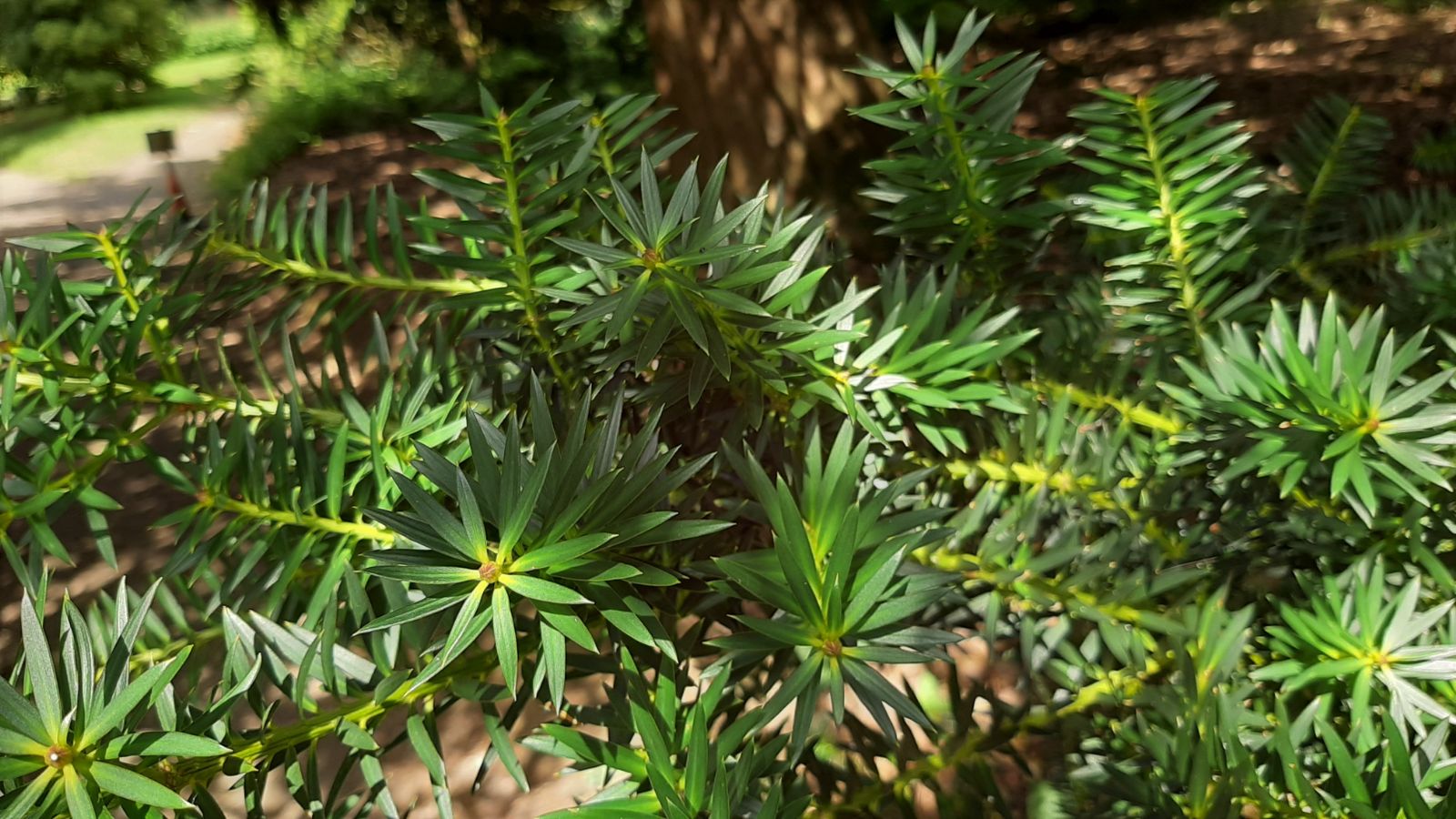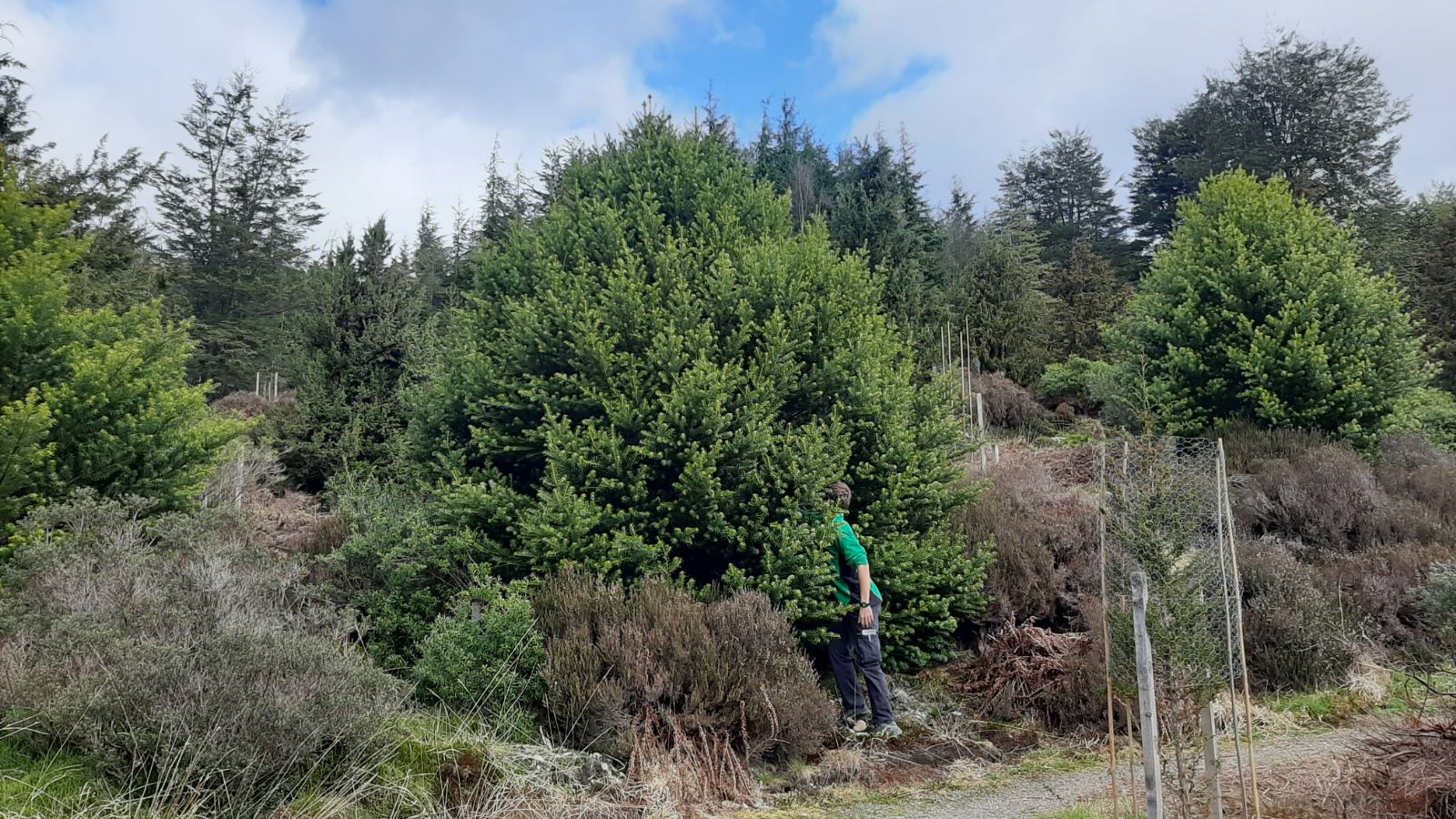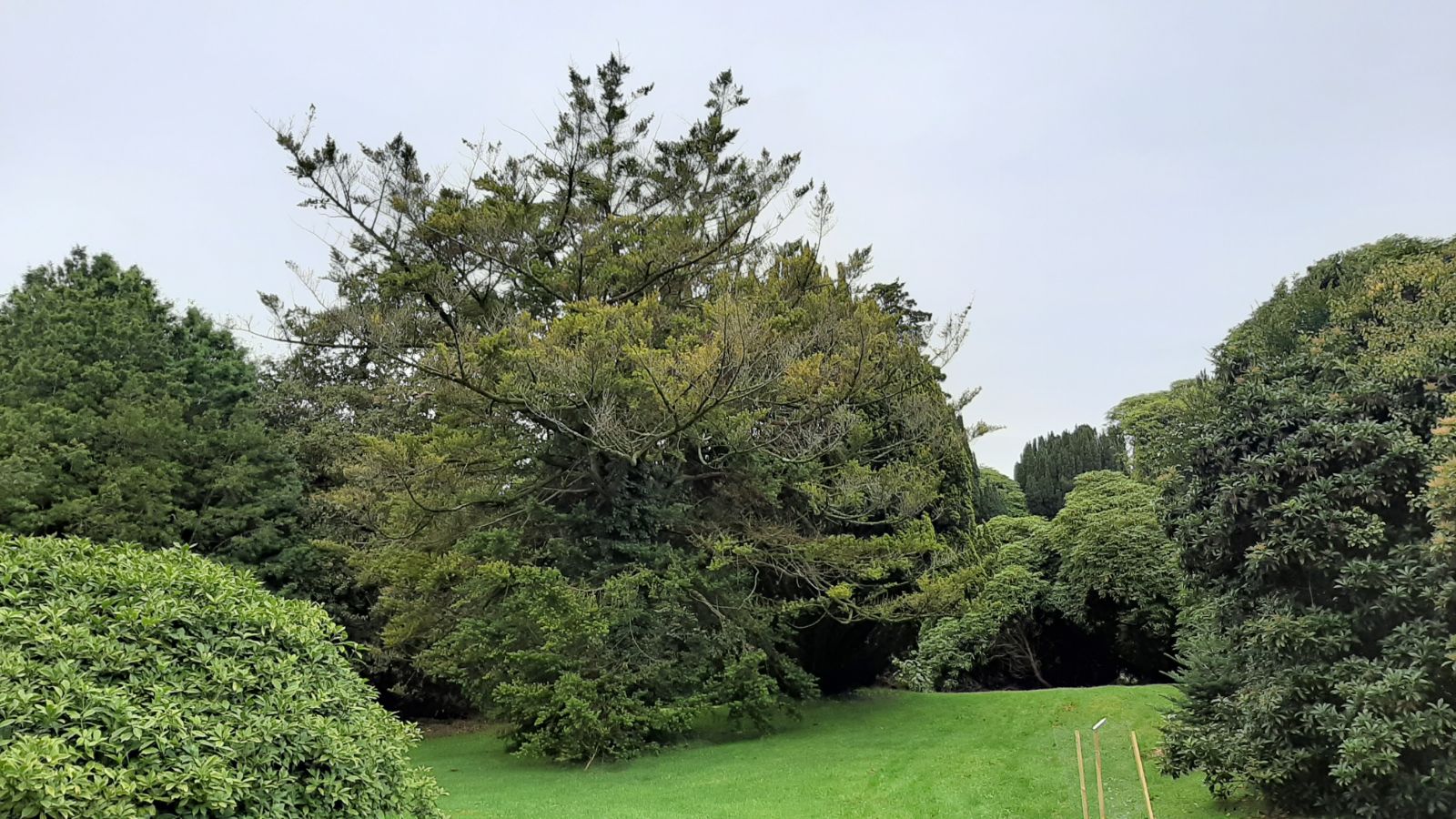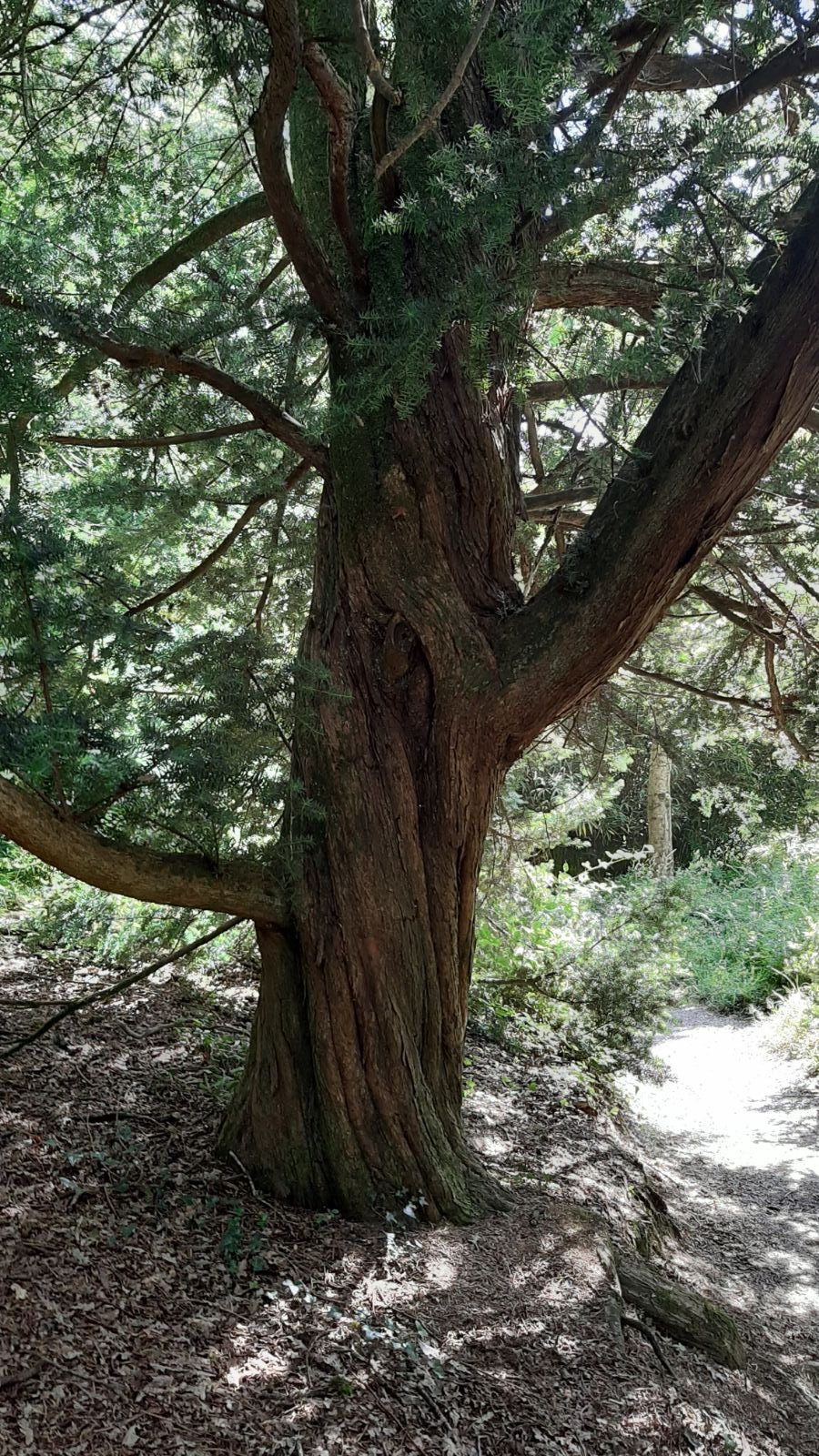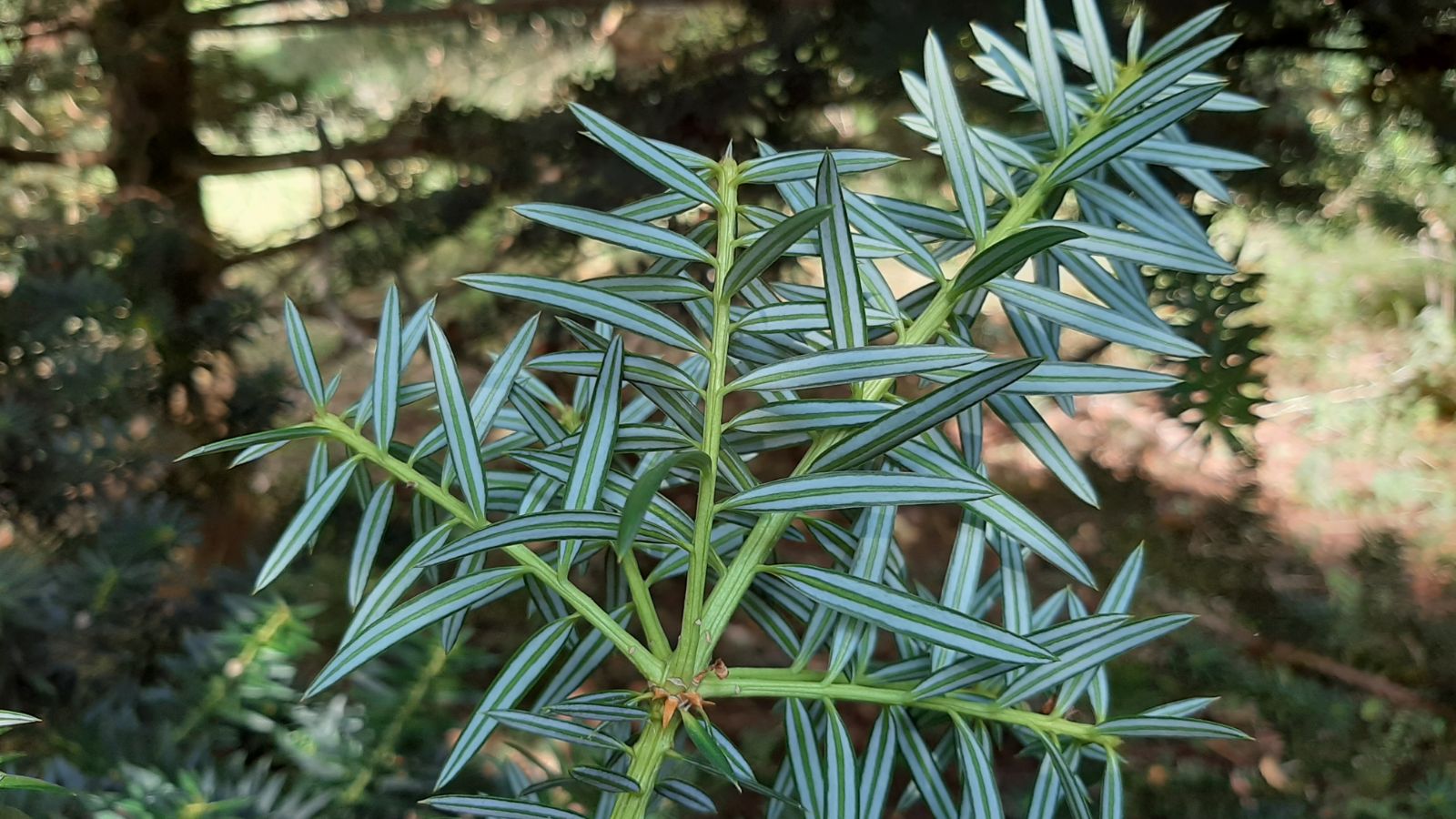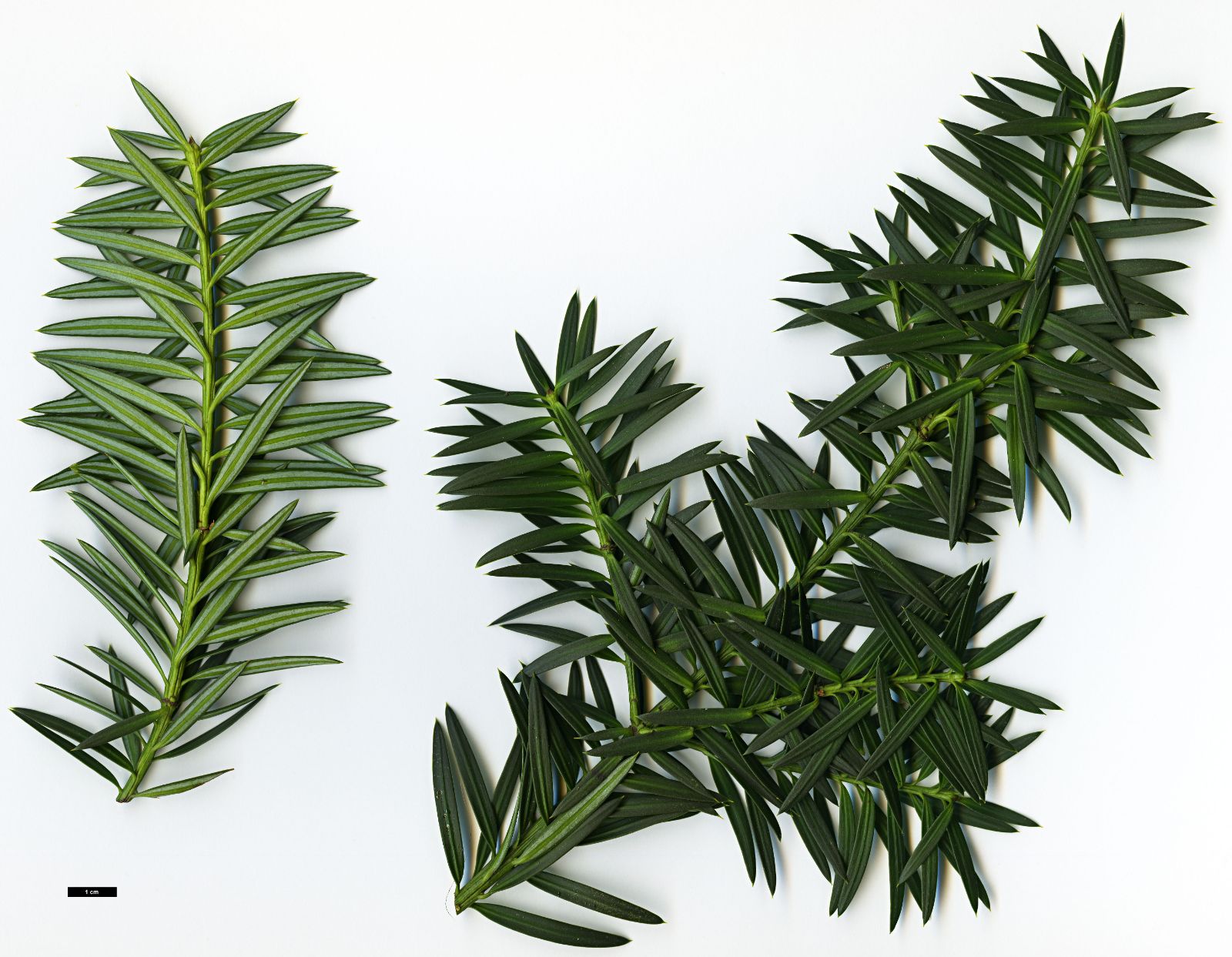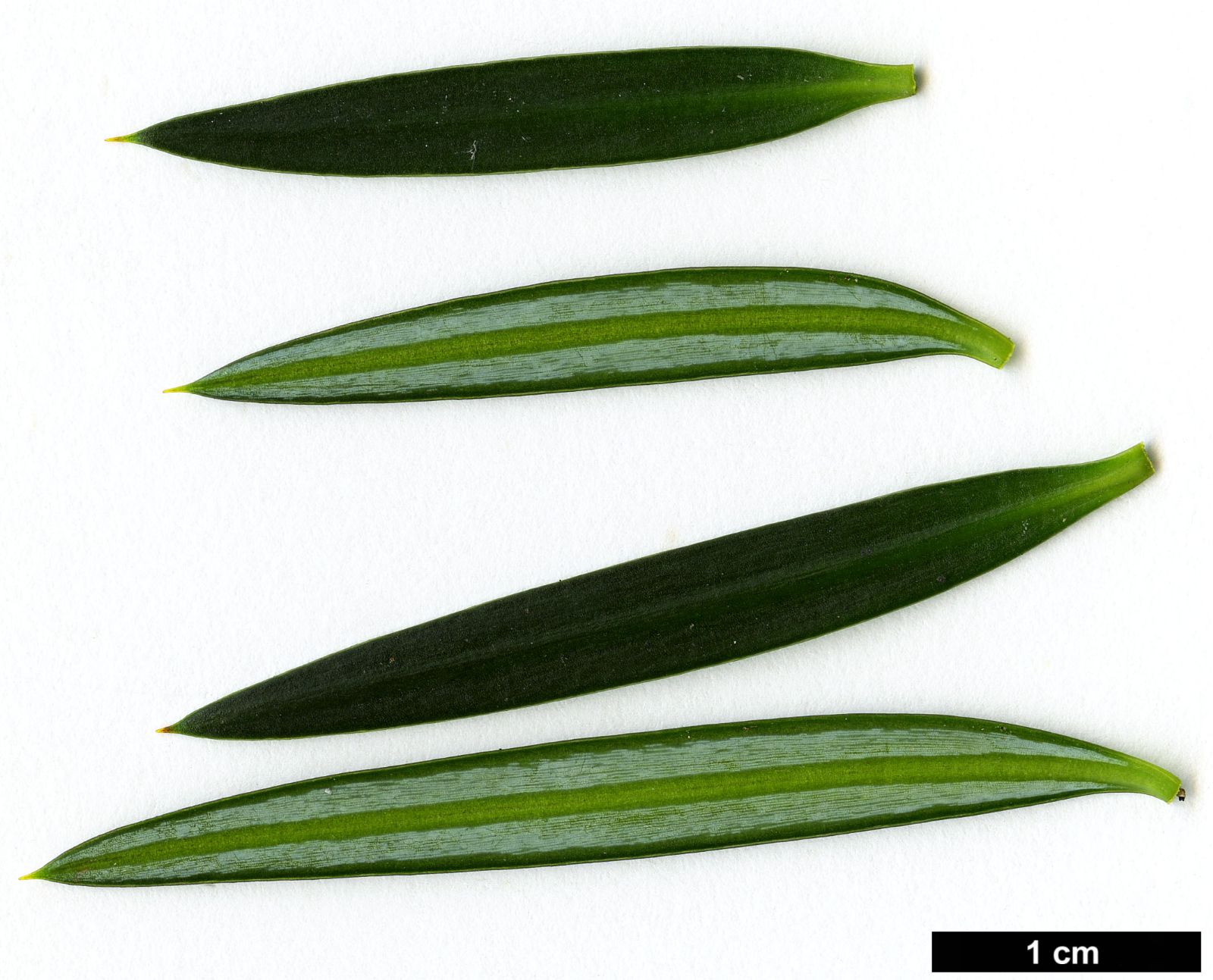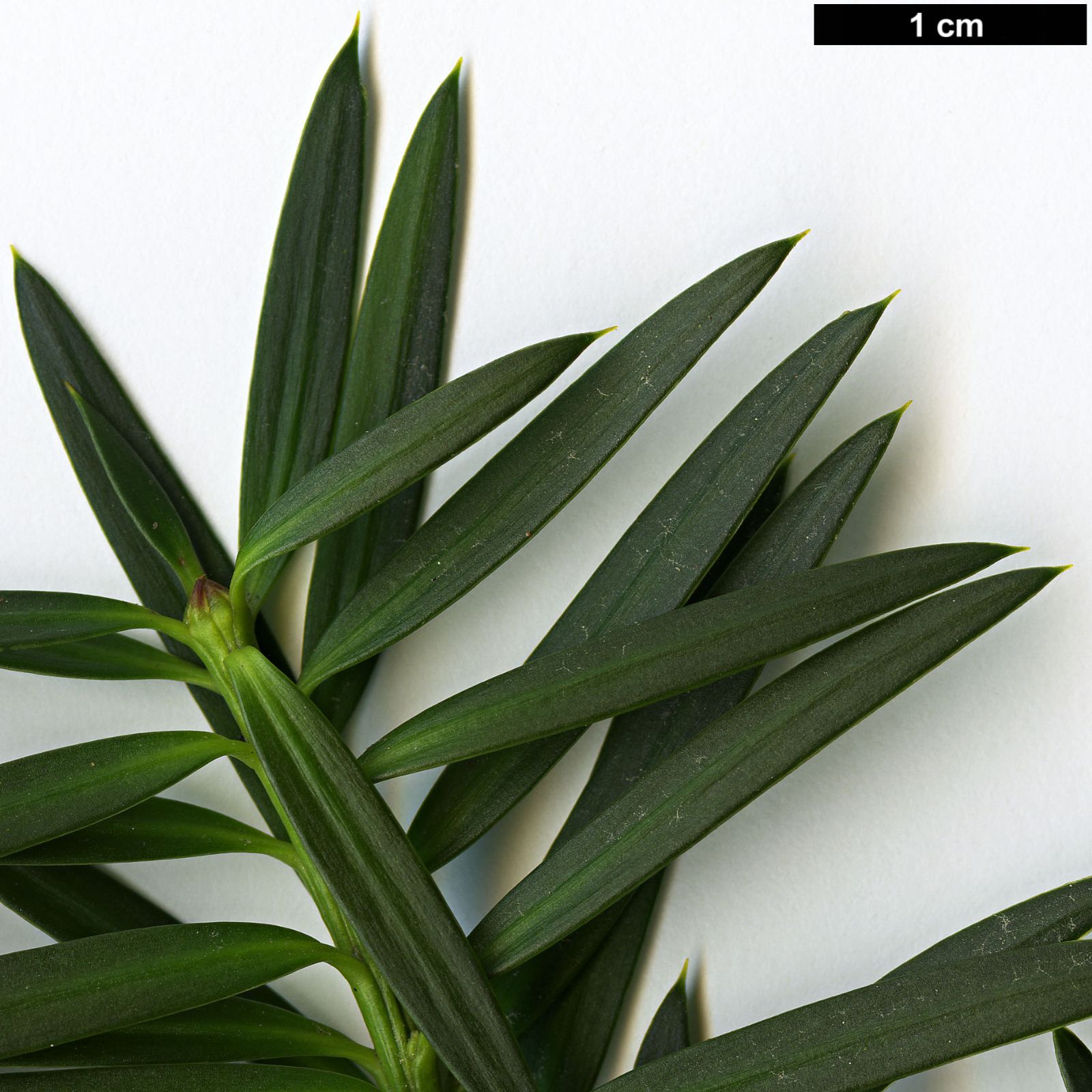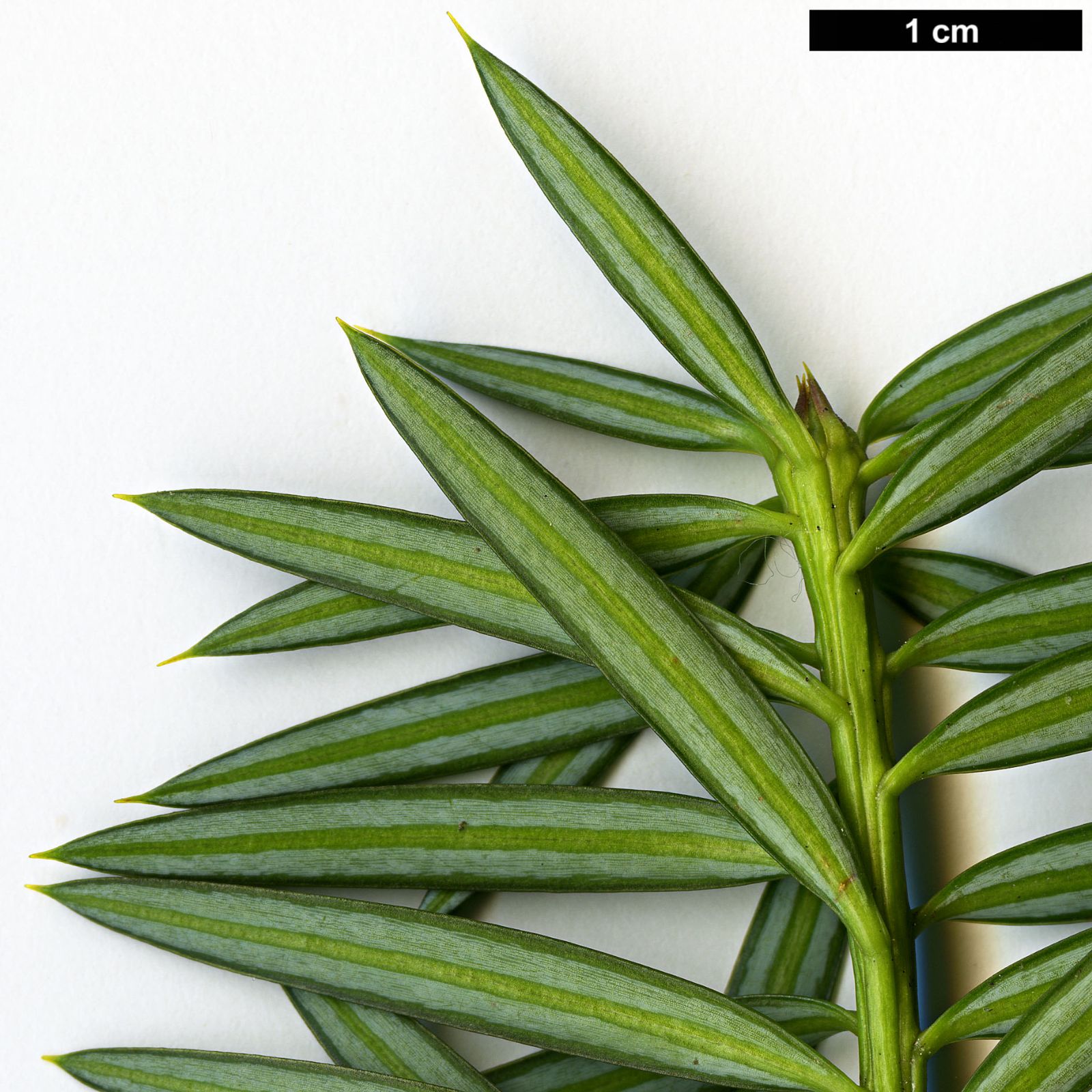Podocarpus nubigenus
Sponsor
Kindly sponsored by
The British Conifer Society in memory of Derek Spicer VMM, founder member.
Credits
Tom Christian (2023)
Recommended citation
Christian, T. (2023), 'Podocarpus nubigenus' from the website Trees and Shrubs Online (treesandshrubsonline.
Genus
Common Names
- Chilean Totara
- Mañío
- Mañío Macho
- Mañío Hembra
- Mañío de Hojas Punzantes
- Pino Amarillo
Other taxa in genus
- Podocarpus acutifolius
- Podocarpus acutifolius × lawrencei
- Podocarpus acutifolius × nivalis
- Podocarpus acutifolius × totara
- Podocarpus brassii
- Podocarpus costalis
- Podocarpus drouynianus
- Podocarpus elatus
- Podocarpus elongatus
- Podocarpus guatemalensis
- Podocarpus henkelii
- Podocarpus laetus
- Podocarpus laetus × nivalis
- Podocarpus lambertii
- Podocarpus latifolius
- Podocarpus lawrencei
- Podocarpus lawrencei × nivalis
- Podocarpus macrophyllus
- Podocarpus matudae
- Podocarpus milanjianus
- Podocarpus nakaii
- Podocarpus neriifolius
- Podocarpus nivalis
- Podocarpus oleifolius
- Podocarpus parlatorei
- Podocarpus pilgeri
- Podocarpus pseudobracteatus
- Podocarpus salignus
- Podocarpus spinulosus
- Podocarpus totara
Tree to 15–25 m with a straight bole, occasionally taller, to c. 2 m dbh. Bark smooth at first, soon exfoliating in leathery scales, longitudinally fissured on older trees, exfoliating in long, thick strips later, freshly exposed bark cinnamon- to purplish-brown, older bark brown to grey. Branches erect at first, later spreading; crown pyramidal. Branchlets stout or slender, finely grooved between leaf bases, youngest branches yellowish. Terminal buds small, to 6 mm long on vigorous leading shoots, with erect or spreading lanceolate scales with acute tips free. Leaves linear-lanceolate, 1.5–3 × 0.2–0.4 cm on established trees (slightly larger on saplings and young trees), straight to slightly curved, leathery, stiff, base abruptly tapering, decurrent, apex gradually tapering, pungent, dark green above, yellowish near base and often with a yellowish green midrib and apex, mid-green beneath with two distinctive silvery white bands of stomata either side of midrib; midrib raised above at least in lower ⅔ of leaf; obtusely raised to flattened below. Pollen cones 2–4 on a common peduncle, cylindrical, 10–25 × 2.5–3.5 mm at maturity. Seed cones solitary, short-pedunculate, with two unequal bracts which fuse to become a swolen, fleshy receptacle, 7–8 × 6–8 mm long at maturity, reddish at first, ripening to blackish purple; seed including the epimatium ovoid to subglobose, purplish-green ripening purple, 8–9 × 6–7 mm. (Farjon 2017; Debreczy & Rácz 2011; Gardner et al. 2006).
Distribution Argentina South, in Chubut, Neuquén, Santa Cruz Provinces Chile Regions X (Valdivia) to XII (Magellanes)
Habitat Temperate rainforest 0–1000 m asl, often associating with Drimys winteri, Laureliopsis philippiana, Fitzroya cupressoides, Nothofagus betuloides, N. nitida, Pilgerodendron uviferum and Saxegothaea conspicua. In the archipelagos of southern Chile it is a common component of forests dominated by Nothofagus nitida.
USDA Hardiness Zone 8
RHS Hardiness Rating H5
Conservation status Near threatened (NT)
This species has an exensive north-south range in southern South America, from 39°S on the Toltén River in the Araucanía Region to over 50°S in the archipelagos of the Magellanes Region in Chile, making it the southern-most growing podocarp in the world. It has a more scattered distribution in the Argentinian Andes, over a reduced latitudinal range (Debreczy & Rácz 2011). A late succession species, in the north it is a scattered component of Valdivian temperate rainforest, occurring with species like Fitzroya cupressoides, Nothofagus dombeyi, and Saxegothaea conspicua, while further south, in the company of Nothofagus nitida, it becomes a signature tree of the southern Valdivian and North Patagonian rainforests that dominate the poorly drained, nutrient-poor soils of the Chilean archipelagos south of Chiloé to its limit at around 50°23’S (Thomas 2019; Gardner et al. 2006).
Podocarpus nubigenus is morphologically similar to P. totara and P. laetus of New Zealand, but it has a remarkable point of distinction: it bears bold, wide, bright white stomatal lines on the undersides of its relatively short (<3 cm) pungent leaves. This character combination renders it quite unmistakable – an extraordinary anomaly in an otherwise difficult genus. It was probably discovered by William Lobb in 1846; he introduced it to the Veitch Nurseries the following year, noting that he had found it growing with Saxegothaea conspicua, Fitzroya cupressoides and Pilgerodendron uviferum. An excerpt of a letter from Lobb to James Veitch Snr., reproduced in Veitch’s Manual of the Coniferae, paints a vivid picture of the habitat and probably places Lobb in the dramatic fjords that dominate the Chilean coast south of Puerto Montt (Lobb in Kent 1900). While quite hardy in cultivation Lobb’s introduction nevertheless proved rather disappointing, its poor performance generally being attributed to lack of sufficient rainfall, the only successful trees being confined to mild, high rainfall areas in Cornwall and Ireland (Kent 1900). The best for many years were two at Kilmacurragh (Wicklow, Ireland) the largest being 9 m in 1931, and at Scorrier (Cornwall, England) 13.7 m in 1931 age 50 years (Chittenden 1932). Bean later cited the same trees, among others, showing that after a good start growth rates reduce drastically: the better Kilmacurragh tree was 14.3 m 35 years later in 1966 while the Scorrier tree was 14.9 m in 1965 (Bean 1976). Contemporary Tree Register records continue to place the best trees in the mild high-rainfall counties of western Britain and Ireland, the best currently (2023) being the Kilmacurragh plant, 15 m × 98 cm dbh in 2014 (Tree Register 2023). A tree planted at Pencarrow, Cornwall, in 1908 (curiously omitted from the 1931 returns) was 11 m × 34 cm dbh in 1970 and 13 m × 76 cm dbh in 2022 (Bean 1976; Tree Register 2023).
Of particular note are new generations of trees raised from wild collected seed, introduced to and distributed throughouht the UK and Ireland from the mid 1990s by the Royal Botanic Garden Edinburgh’s International Conifer Conservation Programme. The most significant plantings resulting from these introductions are groves at Bedgebury National Pinetum, Kent, where trees have established well under canopy in moist soils despite the relatively low precipitation, and at Benmore Botanic Garden, Argyll, where the shallow, nutrient-poor soils and abundant precipitation better mimic southern Chile. The oldest from these introductions at Benmore were around 5 m in 2022, shorter perhaps than the tallest at Bedgebury but more luxuriant (Royal Botanic Garden Edinburgh 2022; pers. obs. 2010–2022). This species is also cultivated on the Pacific coast of North America, in a handful of mainland European collections, and in Australia, but it is rare everywhere.
P. nubigenus has long been valued in its native range for its timber, which as in other timber-bearing species is prized for its colour, strength, and versatility, being employed in carpentry and furniture, and as a component of string instruments (Thomas 2019).

